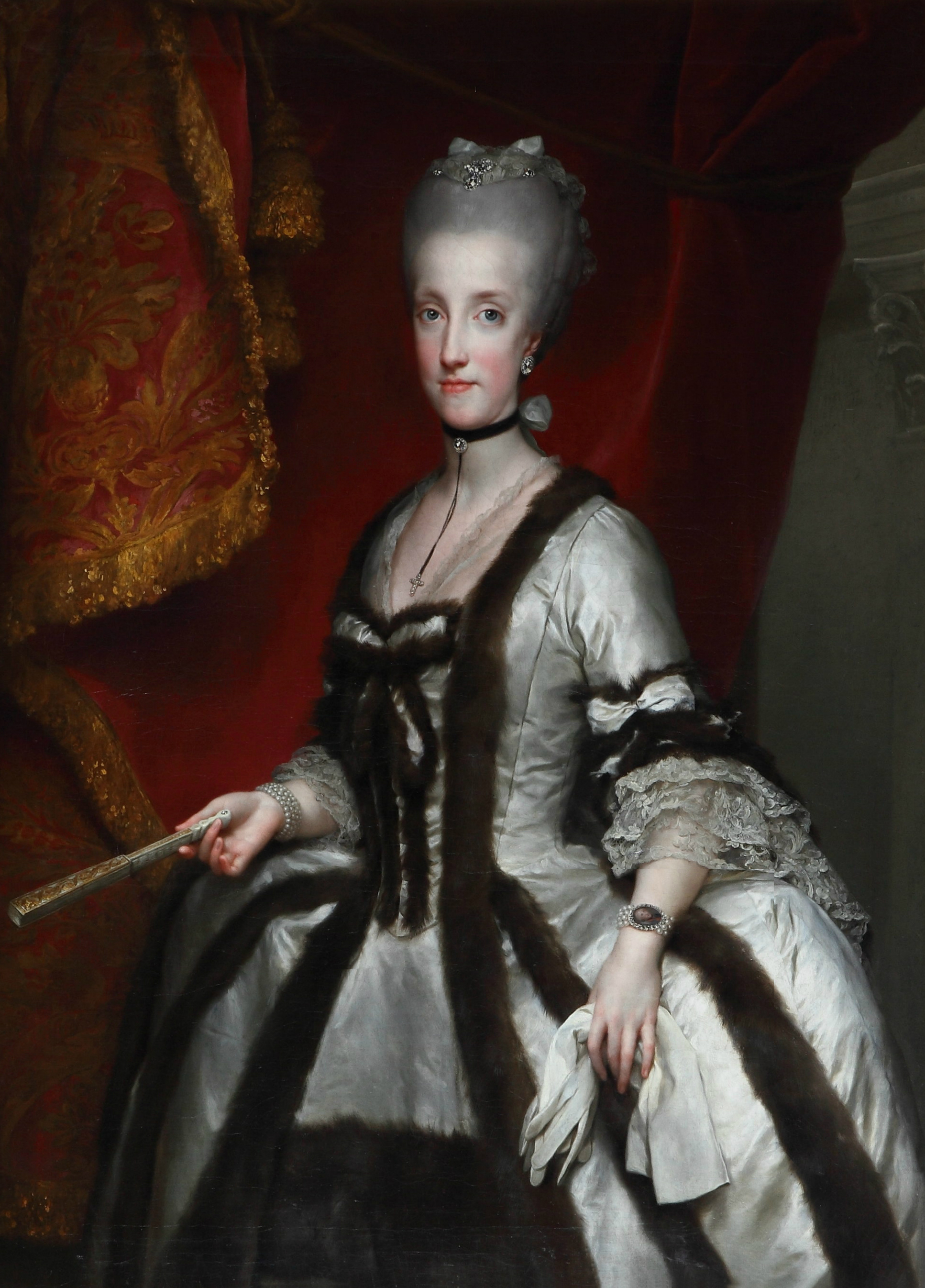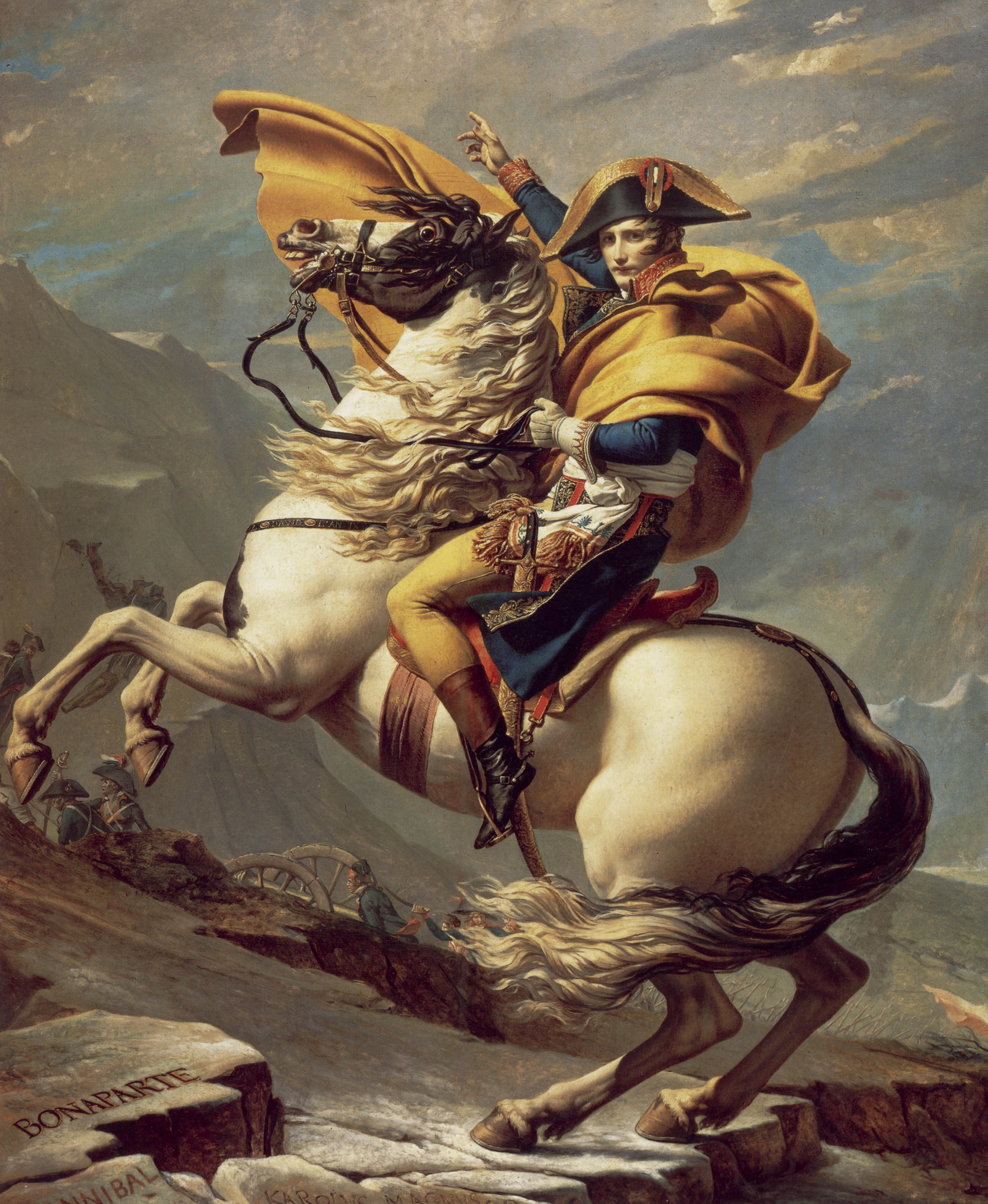|
Treaty Of Florence
The Treaty of Florence (28 March 1801), which followed the Armistice of Foligno (9 February 1801), brought to an end the war between the French Republic and the Kingdom of Naples, one of the Wars of the French Revolution. Forced by the French military presence, Naples ceded some territories in the Tyrrhenian Sea and accepted French garrisons to their ports on the Adriatic Sea. All Neapolitan harbours were closed to British and Ottoman vessels. Napoleon was relatively lenient to the defenseless kingdom of Naples thanks to his need to appease Tsar Paul I of Russia and its allies of the Second League of Armed Neutrality. The Tsar, who was assassinated less than a week before the signing of the treaty, was concerned with the French advance in Italy and had decided to support the King of Naples. The First Consul, wanting to attract the Tsar to his side in the strife in Europe, was forced to allow Ferdinand IV to remain on the throne albeit now as an ally of France. Context In th ... [...More Info...] [...Related Items...] OR: [Wikipedia] [Google] [Baidu] |
Peace Treaty
A peace treaty is an agreement between two or more hostile parties, usually countries or governments, which formally ends a state of war between the parties. It is different from an armistice An armistice is a formal agreement of warring parties to stop fighting. It is not necessarily the end of a war, as it may constitute only a cessation of hostilities while an attempt is made to negotiate a lasting peace. It is derived from the ..., which is an agreement to stop hostilities; a Surrender (military), surrender, in which an army agrees to give up arms; or a ceasefire, ceasefire or truce, in which the parties may agree to temporarily or permanently stop fighting. The art of negotiating a peace treaty in the modern era has been referred to by legal scholar Christine Bell as the , with a peace treaty potentially contributing to the legal framework governing the post conflict period, or . Elements of treaties The content of a treaty usually depends on the nature of the con ... [...More Info...] [...Related Items...] OR: [Wikipedia] [Google] [Baidu] |
Second Coalition
The War of the Second Coalition (1798/9 – 1801/2, depending on periodisation) was the second war on revolutionary France by most of the European monarchies, led by Britain, Austria and Russia, and including the Ottoman Empire, Portugal, Naples and various German monarchies. Prussia did not join this coalition, and Spain supported France. The overall goal of Britain and Russia was to contain the expansion of the French Republic and restore the monarchy in France, whereas Austria, still weakened and in deep financial debt from the War of the First Coalition, primarily sought to recover its position and come out of the war stronger than it entered. Due in important part to this difference in strategy among the three major allied powers, the Second Coalition failed to overthrow the revolutionary regime, and French territorial gains since 1793 were confirmed. In the Franco–Austrian Treaty of Lunéville in February 1801, France held all its previous gains and obtained new land ... [...More Info...] [...Related Items...] OR: [Wikipedia] [Google] [Baidu] |
Marie Antoinette
Marie Antoinette Josèphe Jeanne (; ; née Maria Antonia Josepha Johanna; 2 November 1755 – 16 October 1793) was the last queen of France before the French Revolution. She was born an archduchess of Austria, and was the penultimate child and youngest daughter of Empress Maria Theresa and Emperor Francis I. She became dauphine of France in May 1770 at age 14 upon her marriage to Louis-Auguste, heir apparent to the French throne. On 10 May 1774, her husband ascended the throne as Louis XVI and she became queen. Marie Antoinette's position at court improved when, after eight years of marriage, she started having children. She became increasingly unpopular among the people, however, with the French '' libelles'' accusing her of being profligate, promiscuous, allegedly having illegitimate children, and harboring sympathies for France's perceived enemies—particularly her native Austria. The false accusations of the Affair of the Diamond Necklace damaged her reputation furthe ... [...More Info...] [...Related Items...] OR: [Wikipedia] [Google] [Baidu] |
Maria Carolina Of Austria
Maria Carolina Louise Josepha Johanna Antonia (13 August 1752 – 8 September 1814) was Queen of Naples and Sicily as the wife of King Ferdinand I of the Two Sicilies. As '' de facto'' ruler of her husband's kingdoms, Maria Carolina oversaw the promulgation of many reforms, including the revocation of the ban on Freemasonry, the enlargement of the navy under her favorite, Sir John Acton and the expulsion of Spanish influence. She was a proponent of enlightened absolutism until the advent of the French Revolution, when, in order to prevent its ideas gaining currency, she made Naples a police state. Born an archduchess of Austria, the thirteenth child of Empress Maria Theresa and Emperor Francis I, Maria Carolina married Ferdinand as part of an Austrian alliance with Spain, of which Ferdinand's father was king. Following the birth of a male heir in 1775, Maria Carolina was admitted to the Privy Council. Thereafter, she dominated it until 1812, when she was sent back to Vien ... [...More Info...] [...Related Items...] OR: [Wikipedia] [Google] [Baidu] |
Charles IV Of Spain
, house = Bourbon-Anjou , father = Charles III of Spain , mother = Maria Amalia of Saxony , birth_date =11 November 1748 , birth_place =Palace of Portici, Portici, Naples , death_date = , death_place = Palazzo Barberini, Rome, Papal States , burial_place = El Escorial , religion =Roman Catholic , signature =Charles IV of Spain signature.svg Charles IV (Carlos Antonio Pascual Francisco Javier Juan Nepomuceno José Januario Serafín Diego) 11 November 1748 – 20 January 1819) was King of Spain and ruler of the Spanish Empire from 1788 to 1808. The Spain inherited by Charles IV gave few indications of instability, but during his reign, Spain entered a series of disadvantageous alliances and his regime constantly sought cash to deal with the exigencies of war. He detested his son and heir Ferdinand, who led the unsuccessful El Escorial Conspiracy and later forced Charles's abdication after the Tumult of Aranjuez ... [...More Info...] [...Related Items...] OR: [Wikipedia] [Google] [Baidu] |
Treaty Of Lunéville
The Treaty of Lunéville (or Peace of Lunéville) was signed in the Treaty House of Lunéville on 9 February 1801. The signatory parties were the French Republic and Emperor Francis II, who signed on his own behalf as ruler of the hereditary domains of the House of Austria and on behalf of the Holy Roman Empire. The signatories were Joseph Bonaparte and Count Ludwig von Cobenzl, the Austrian foreign minister. The treaty formally ended Austrian and Imperial participation in the War of the Second Coalition and the French Revolutionary Wars. The Austrian army had been defeated by Napoleon Bonaparte at the Battle of Marengo on 14 June 1800 and then by Jean Victor Moreau at the Battle of Hohenlinden on 3 December. Forced to sue for peace, the Austrians signed the treaty of Lunéville, which largely confirmed the treaty of Campo Formio (17 October 1797), which itself had confirmed the treaty of Leoben (April 1797). The United Kingdom was the sole nation still at war with France fo ... [...More Info...] [...Related Items...] OR: [Wikipedia] [Google] [Baidu] |
Battle Of Hohenlinden (1800)
The Battle of Hohenlinden was fought on 3 December 1800 during the French Revolutionary Wars. A French First Republic, French army under Jean Victor Marie Moreau won a decisive victory over an Habsburg monarchy, Austrian and Electorate of Bavaria, Bavarian force led by 18-year-old Archduke John of Austria. The allies were forced into a disastrous retreat that compelled them to request an armistice, effectively ending the War of the Second Coalition. Hohenlinden is 33 km east of Munich in modern Germany. General of Division Moreau's 56,000-strong army engaged some 64,000 Austrians and Bavarians. The Austrians, believing they were pursuing a beaten enemy, moved through heavily wooded terrain in four disconnected columns. Moreau ambushed the Austrians as they emerged from the Ebersberg forest while launching Antoine Richepanse's division in a surprise envelopment of the Austrian left flank. Displaying superb individual initiative, Moreau's generals managed to encircle and smas ... [...More Info...] [...Related Items...] OR: [Wikipedia] [Google] [Baidu] |
Battle Of Höchstädt (1800)
The Battle of Höchstädt was fought on 19 June 1800 on the north bank of the Danube near Höchstädt, and resulted in a French victory under General Jean Victor Marie Moreau against the Austrians under Baron Pál Kray. The Austrians were subsequently forced back into the fortress town of Ulm. Instead of attacking the heavily fortified, walled city, which would result in massive losses of personnel and time, Moreau dislodged Kray's supporting forces defending the Danube passage further east. As a line of retreat eastward disappeared, Kray quickly abandoned Ulm, and withdrew into Bavaria. This opened the Danube pathway toward Vienna. The Danube passage connecting Ulm, Donauwörth, Ingolstadt and Regensburg had strategic importance in the ongoing competition for European hegemony between France and the Holy Roman Empire; the army that commanded the Danube, especially its passage through Württemberg and Bavaria, could command access to the important cities of Munich and the ... [...More Info...] [...Related Items...] OR: [Wikipedia] [Google] [Baidu] |
Battle Of Marengo
The Battle of Marengo was fought on 14 June 1800 between French forces under the First Consul Napoleon Bonaparte and Austrian forces near the city of Alessandria, in Piedmont, Italy. Near the end of the day, the French overcame General Michael von Melas's surprise attack, drove the Austrians out of Italy and consolidated Bonaparte's political position in Paris as First Consul of France in the wake of his coup d'état the previous November. Surprised by the Austrian advance toward Genoa in mid-April 1800, Bonaparte hastily led his army over the Alps in mid-May and reached Milan on 2 June. After cutting Melas's line of communications by crossing the River Po and defeating '' Feldmarschallleutnant'' (FML) Peter Karl Ott von Bátorkéz at Montebello on 9 June, the French closed in on the Austrian Army, which had massed in Alessandria. Deceived by a local double agent, Bonaparte dispatched large forces to the north and the south, but the Austrians launched a surprise attack o ... [...More Info...] [...Related Items...] OR: [Wikipedia] [Google] [Baidu] |
Third Treaty Of San Ildefonso
The Third Treaty of San Ildefonso was a secret agreement signed on 1 October 1800 between the Spanish Empire and the French Republic by which Spain agreed in principle to exchange its North American colony of Louisiana for territories in Tuscany. The terms were later confirmed by the March 1801 Treaty of Aranjuez. Background For much of the 18th century, France and Spain were allies, but after the execution of Louis XVI in 1793, Spain joined the War of the First Coalition against the French Republic but was defeated in the War of the Pyrenees. In August 1795, Spain and France agreed to the Peace of Basel, with Spain ceding its half of the island of Hispaniola, the modern Dominican Republic. In the 1796 Second Treaty of San Ildefonso, Spain allied with France in the War of the Second Coalition and declared war on Britain. This resulted in the loss of Trinidad and, more seriously, Menorca, which Britain occupied from 1708 to 1782 and whose recovery was the major achievem ... [...More Info...] [...Related Items...] OR: [Wikipedia] [Google] [Baidu] |
Spain
, image_flag = Bandera de España.svg , image_coat = Escudo de España (mazonado).svg , national_motto = ''Plus ultra'' (Latin)(English: "Further Beyond") , national_anthem = (English: "Royal March") , image_map = , map_caption = , image_map2 = , capital = Madrid , coordinates = , largest_city = Madrid , languages_type = Official language , languages = Spanish , ethnic_groups = , ethnic_groups_year = , ethnic_groups_ref = , religion = , religion_ref = , religion_year = 2020 , demonym = , government_type = Unitary parliamentary constitutional monarchy , leader_title1 = Monarch , leader_name1 = Felipe VI , leader_title2 = Prime Minister , leader_name2 = Pedro Sánchez , legislature = C ... [...More Info...] [...Related Items...] OR: [Wikipedia] [Google] [Baidu] |
Ottoman Empire
The Ottoman Empire, * ; is an archaic version. The definite article forms and were synonymous * and el, Оθωμανική Αυτοκρατορία, Othōmanikē Avtokratoria, label=none * info page on book at Martin Luther University) // CITED: p. 36 (PDF p. 38/338) also known as the Turkish Empire, was an empire that controlled much of Southeast Europe, Western Asia, and Northern Africa between the 14th and early 20th centuries. It was founded at the end of the 13th century in northwestern Anatolia in the town of Söğüt (modern-day Bilecik Province) by the Turkoman tribal leader Osman I. After 1354, the Ottomans crossed into Europe and, with the conquest of the Balkans, the Ottoman beylik was transformed into a transcontinental empire. The Ottomans ended the Byzantine Empire with the conquest of Constantinople in 1453 by Mehmed the Conqueror. Under the reign of Suleiman the Magnificent, the Ottoman Empire marked the peak of its power and prosperity, as well a ... [...More Info...] [...Related Items...] OR: [Wikipedia] [Google] [Baidu] |









.jpg)